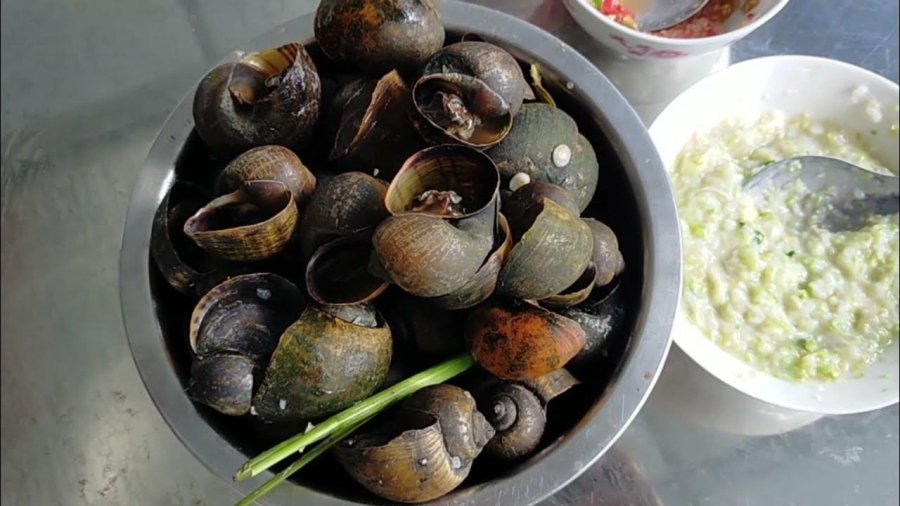Soak snails in a metal basin, pot, or spoon
According to the experience of many people, snails will quickly release the deep-seated mud and dirt when they come into contact with metal. The simplest way is to soak them in a metal basin or place a iron knife or spoon in the same container for 2 – 3 hours. As metal has reducing properties, when it comes into contact with water, it reduces H2O to hydrogen, reducing the amount of oxygen in the water. This causes the snails to close their mouths to breathe, while releasing the muddy slime. Afterwards, wash them several times to clean them before cooking.

Soak snails in rice water or flour
This is a folk trick that many people apply to clean snails. After buying the snails, wash them thoroughly and soak them in rice water for about 2-3 hours. At this time, the snails will eat the food, close their mouths, and wiggle their antennae, causing the sticky mud to come out and accumulate into layers under the bottom of the basin.
In addition, rice water helps to make the snails more fragrant and flavorful. If there is no rice water, adding a little flour to the soaking water can also help clean the snails.
Snails cooked with stove smoke, soaked in eggs and milk
In the traditional cuisine of the Northern region of Vietnam, especially in Hanoi, snail processing is quite elaborate.
The purchased stuffed snails are washed clean, drained, and then hung in a basket above the stove, the more smoke, the better. The smoke and hot steam dry the snails to prevent flies from laying eggs, while making the snails more fragrant. During this time, sometimes for a week, the snails only sleep and do not die. Every few days, they are taken down to soak in concentrated rice water and then continue to be hung above the stove to smoke. Like that, the snails become clean, no more muddy smell. Finally, put the snails in a ceramic plate with the mouth facing down and break a chicken egg to absorb the smell.
People in the Mekong Delta region also have a similar method of cooking snails, only reserved for special occasions. The snails are also hung above the stove for the whole month, then soaked in fresh milk and chicken eggs. This type of snail is used to make many delicious and popular dishes, especially the steamed snails with lemongrass and fermented rice – a characteristic dish of the region.
Processing after snails have released all the mud:
– Cut the lemongrass into sections and finely chop.
– Crush the garlic and chili, cut the lime leaves, peel and wash the ginger, then crush or finely chop, cut the tamarind into slices.
– Put the snails in a pot, add lemongrass, lime leaves, sliced chili, a little water, a bit of seasoning, cover and heat. When the snails start boiling, stir them evenly, when the snails are cooked, turn off the heat and cover to keep them warm.

– Prepare the dipping sauce: 2 tablespoons of filtered water – 2 tablespoons of sugar – 2 tablespoons of tamarind paste – 3 tablespoons of fish sauce, stir well, add ginger, garlic, chili, lime leaves, and tamarind slices.
– Place the snails on a plate and serve with the ginger fish sauce.
Good luck!






































